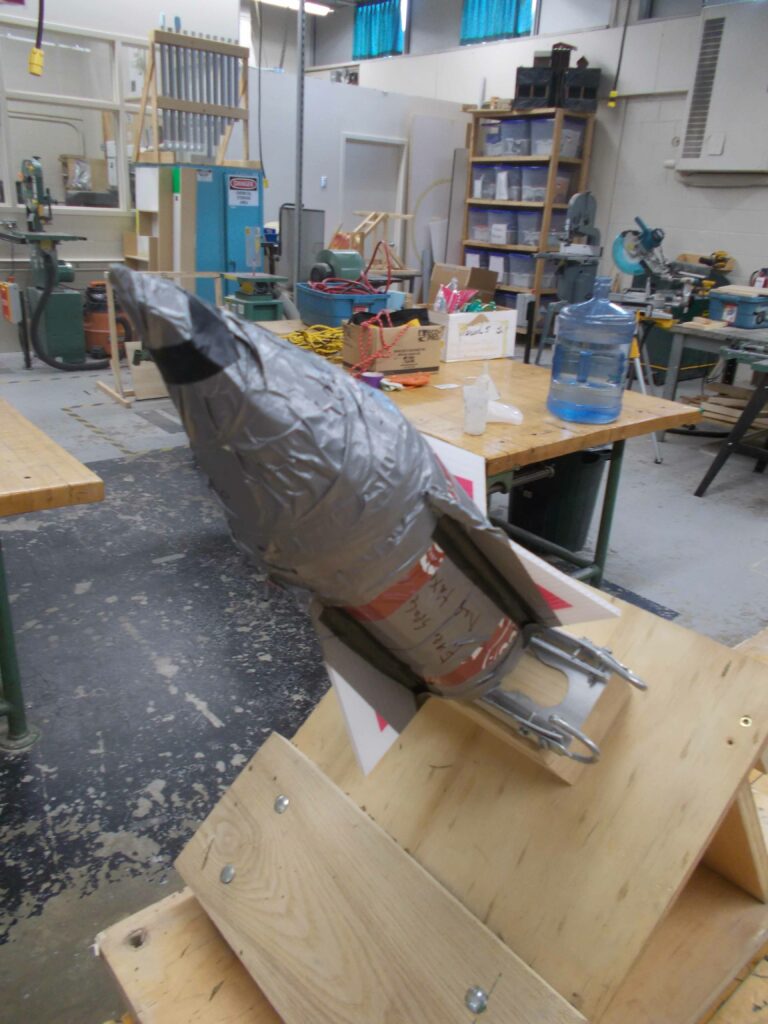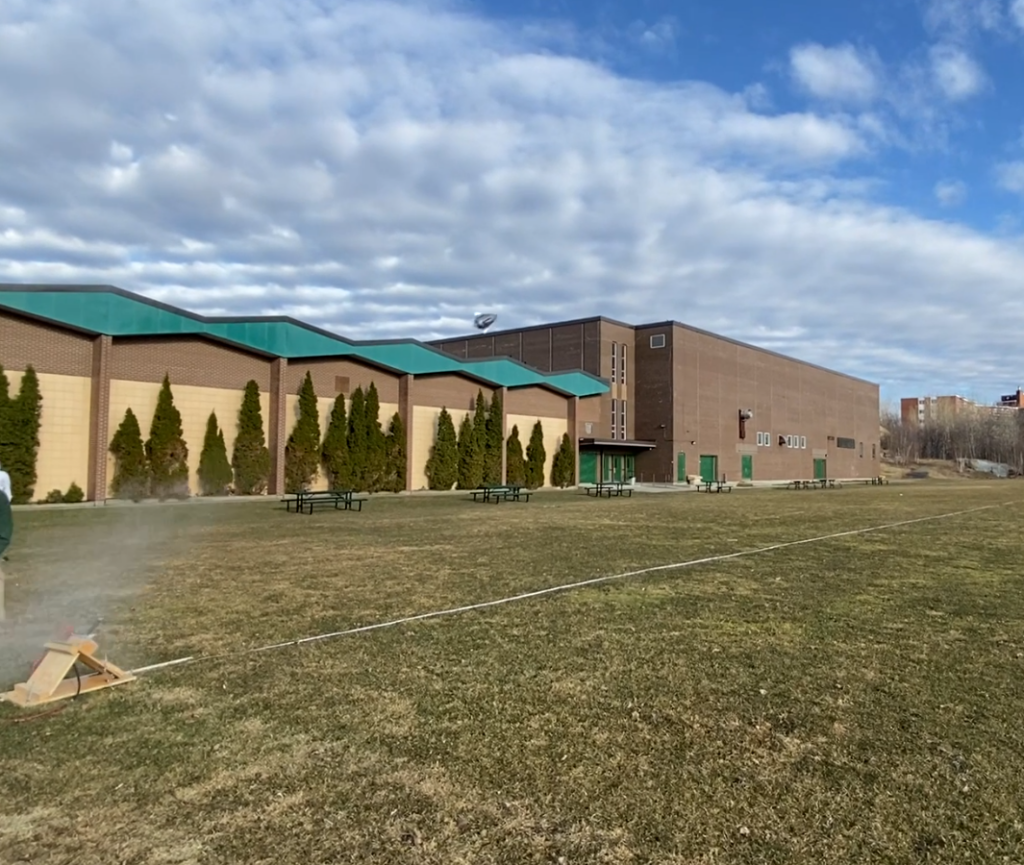Overview of the Unit
In this unit, we focused on designing and building a bottle rocket using a 2L pop bottle as the pressure vessel. The goal was to make the rocket travel as far as possible by applying principles of rocketry, including Newton’s Laws of Motion, center of mass, center of pressure, drag, and stability. The project involved researching these principles, designing the rocket, constructing it, and testing its performance.
Key Activities:
- Research:
- Newton’s Laws of Motion: Understanding the fundamental principles governing the motion of the rocket.
- Rocket Design Principles: Exploring the concepts of inertia, center of mass, center of pressure, drag, and stability through the “Principles of Rocketry” resources.
- Design Considerations: Evaluating the advantages and disadvantages of increasing inertia, adding ballast, and optimizing the shape of fins and nose cone to reduce drag and increase stability.
Samples


Construction Process
- Planning:
- We planned out the idea of how we were going to make our rockets by hand, discussing and sketching our designs.
- Collecting:
- We collected materials such as plastic pop bottles, pop bottle tops, duct tape, cardboard, and ballast materials (rocks and sand).
- Experimentation:
- We experimented with different configurations of the rocket components, including the placement of the ballast, the shape and size of the fins, and the design of the nose cone.
- Testing:
- We tested the demo rockets filled with pressurized water to observe their aerodynamics and flight performance.
- Finish:
- Finally, we refined our design based on the test results and launched the completed rocket.
Key Elements of the Rocket
- Pressure Vessel:
- The main body of the rocket, constructed from a 2L pop bottle, serves as the pressure vessel holding the pressurized water used as fuel.
- Ballast:
- Made from rocks and sand, the ballast helps stabilize the rocket by shifting the center of mass forward, improving its flight path.
- Nose Cone:
- The tip of the rocket, designed to reduce air resistance and improve aerodynamics.
- Fins:
- Attached to the bottom of the rocket, the fins help balance the rocket and provide stability during flight.
- Padding:
- Cardboard and plastic padding were added to protect the rocket, ensuring durability even in adverse weather conditions.
Takeaways
- Budget Constraints:
- We had to use cheap materials within a limited budget, highlighting the challenges posed by insufficient funding inWe had to use cheap materials within a limited budget, highlighting the challenges posed by insufficient funding in the education system and personal finances.
- Problem Solving:
- Planning the rocket by hand in real-time was challenging due to the freedom of the project, requiring creative problem-solving and adaptability.
- Teamwork:
- Working with a team was initially difficult due to conflicting interests, but collaboration ultimately led to faster completion and better ideas, significantly improving the project.